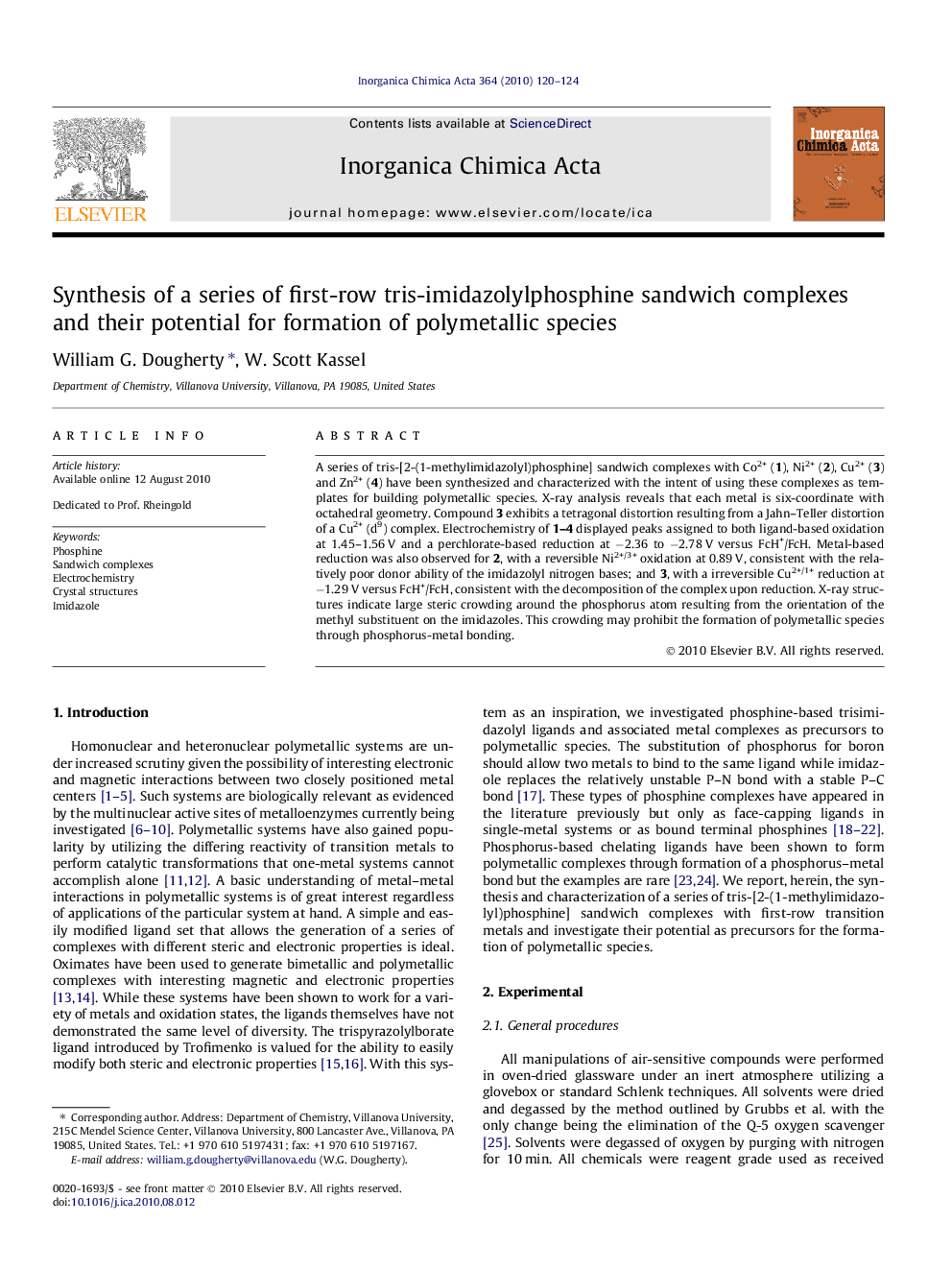| Article ID | Journal | Published Year | Pages | File Type |
|---|---|---|---|---|
| 1306691 | Inorganica Chimica Acta | 2010 | 5 Pages |
A series of tris-[2-(1-methylimidazolyl)phosphine] sandwich complexes with Co2+ (1), Ni2+ (2), Cu2+ (3) and Zn2+ (4) have been synthesized and characterized with the intent of using these complexes as templates for building polymetallic species. X-ray analysis reveals that each metal is six-coordinate with octahedral geometry. Compound 3 exhibits a tetragonal distortion resulting from a Jahn–Teller distortion of a Cu2+ (d9) complex. Electrochemistry of 1–4 displayed peaks assigned to both ligand-based oxidation at 1.45–1.56 V and a perchlorate-based reduction at −2.36 to −2.78 V versus FcH+/FcH. Metal-based reduction was also observed for 2, with a reversible Ni2+/3+ oxidation at 0.89 V, consistent with the relatively poor donor ability of the imidazolyl nitrogen bases; and 3, with a irreversible Cu2+/1+ reduction at −1.29 V versus FcH+/FcH, consistent with the decomposition of the complex upon reduction. X-ray structures indicate large steric crowding around the phosphorus atom resulting from the orientation of the methyl substituent on the imidazoles. This crowding may prohibit the formation of polymetallic species through phosphorus-metal bonding.
Graphical abstractA series of tris-[2-(1-methylimidazolyl)phosphine] sandwich complexes with Co2+, Ni2+, Cu2+ and Zn2+ have been synthesized and characterized with the intent of using these complexes as templates for building polymetallic species.Figure optionsDownload full-size imageDownload as PowerPoint slide
